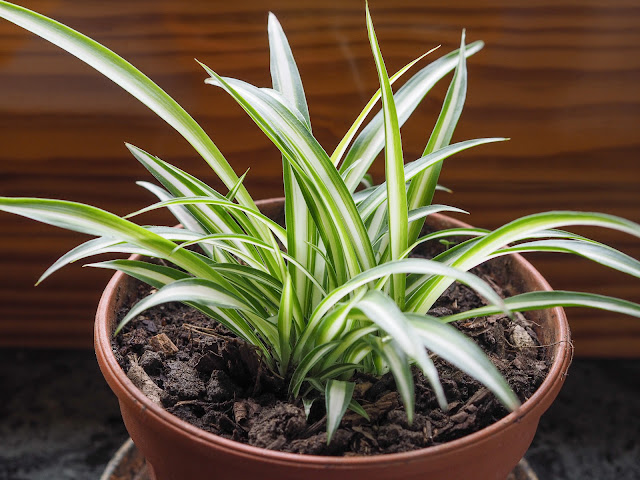There exists a green companion that not only enhances the aesthetic appeal of
your living space but also contributes significantly to your well-being. The
Spider Plant, scientifically known as Chlorophytum comosum, is a resilient and
visually appealing houseplant that has earned its place as a favorite among
both novice and experienced plant enthusiasts. In this blog post, we will delve
into the fascinating world of the Spider Plant, exploring its origins, unique
characteristics, care requirements, and the numerous benefits it brings to your
home.
Origin and Evolution:
The Spider Plant is native to South Africa, where it thrives
in the warm and subtropical climates. Its botanical name, Chlorophytum comosum,
reflects its lush green foliage and the characteristic "comosum" or
tufted appearance of its leaves. This plant belongs to the Asparagaceae family
and has evolved to become a popular choice for indoor cultivation due to its
adaptability and resilience.
Characteristics:
- Distinctive
Foliage: The most striking feature of the Spider Plant is its arching
leaves, which can grow up to a foot long. These leaves are adorned with a
central white stripe, giving them a visually appealing and unique
appearance. As the plant matures, it produces long arching stems with
miniature plantlets or "pups" that dangle gracefully, resembling
spiders – hence the name.
- Adaptability:
Spider Plants are renowned for their adaptability to various conditions.
They can thrive in indirect sunlight but are also capable of tolerating
low light conditions, making them suitable for different areas of your
home. Additionally, they can endure a range of temperatures and are
relatively forgiving of occasional neglect.
Care Requirements:
- Light:
Spider Plants prefer bright, indirect light but can tolerate lower light
levels. Avoid exposing them to direct sunlight, as this can scorch their
leaves.
- Watering:
These plants appreciate consistently moist soil. Water them thoroughly
when the top inch of soil feels dry, but be cautious not to overwater, as
they are susceptible to root rot. During the growing season, spring
through early fall, fertilize with a balanced, water-soluble fertilizer
once a month.
- Potting:
Use well-draining potting mix, and repot the Spider Plant every two to
three years to refresh the soil and provide more room for growth.
- Temperature
and Humidity: Spider Plants can tolerate a wide range of temperatures
but prefer a moderate, consistent environment. They are generally
comfortable with average indoor humidity levels.
Benefits:
- Air
Purification: Spider Plants are renowned for their air-purifying
abilities. They effectively filter out common indoor pollutants such as
formaldehyde, benzene, and carbon monoxide, promoting a healthier indoor
environment.
- Easy
Propagation: One of the delights of owning a Spider Plant is its ease
of propagation. The plantlets, or pups, can be snipped off and potted
separately, allowing you to share the green goodness with friends and
family.
- Stress
Reduction: Research suggests that the presence of indoor plants,
including the Spider Plant, can reduce stress and promote a sense of
well-being. The lush greenery and air-purifying qualities contribute to a
calming atmosphere.
The Spider Plant stands out as a delightful and
low-maintenance companion that brings both aesthetic and health benefits to
your home. Its adaptability, distinctive appearance, and air-purifying
capabilities make it an ideal choice for plant enthusiasts of all levels. As
you nurture your Spider Plant, you'll not only witness its graceful growth but
also experience the joy of cultivating a green ally that enhances your living
space and contributes to a healthier, more harmonious environment.

